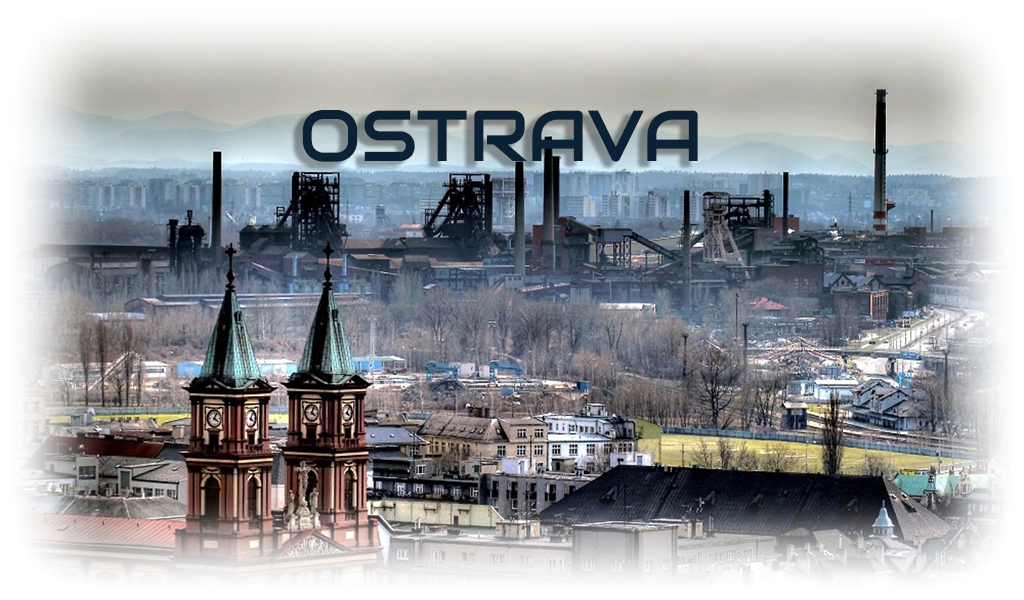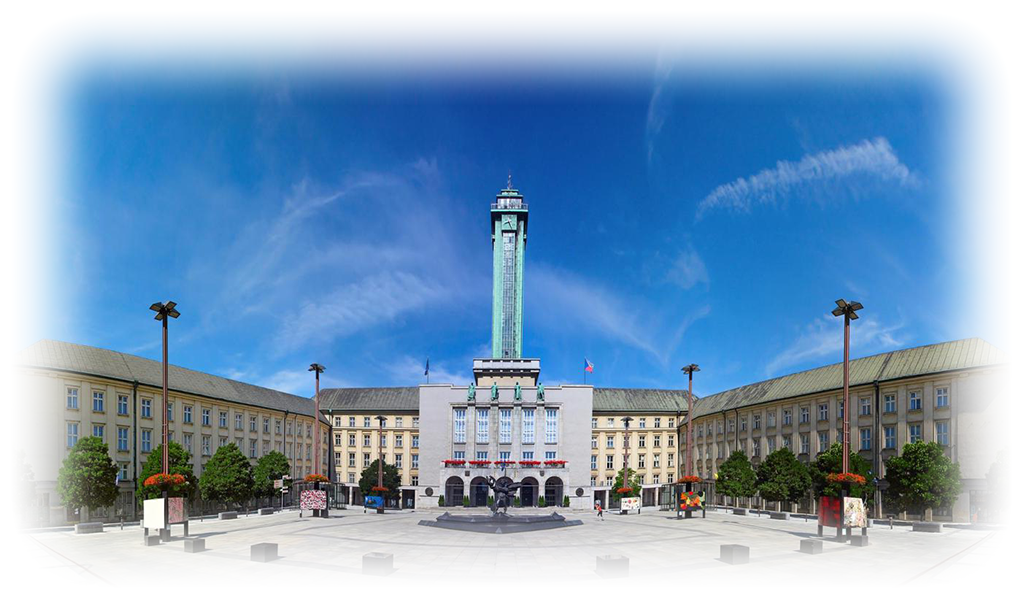
Ostrava is the third largest city in the Czech Republic and the capital of the Moravian-Silesian Region. Located in the historic region of Southern Silesia near the border with Poland and Slovakia . Ostrava is an ancient city with fascinating. industrial history, which is the heart of the second largest urban agglomeration in the country. Most recently, this place was considered the most polluted among the cities of the Czech Republic. Now most of the industrial enterprises have closed (due to various reasons) and Ostrava is gradually becoming a tourist and cultural center.
Geography and weather
Ostrava is located in the extreme northeast of the Czech Republic on the river Ostravice near its confluence with the Odra and Opava. The city is located between Katowice and Brno, 371 km from Prague and 170 km from Krakow, Poland . Ostrava has a temperate climate with relatively warm summers and cool winters.
Источник: https://mandry.club/mista/ostrava/
History and interesting facts
The first mention of Ostrava dates back to 1267. During this period, a village was founded here along the so-called Amber Trail, which was used by merchants as the main route connecting the Baltic with the Mediterranean. In the second half of the 14th century, city fortifications and probably a castle were built. Later, the importance of Ostrava fell and until the 18th century it was a quiet provincial town.
A turning point in the history of Ostrava was the discovery of coal deposits in the second half of the 18th century. This led to an industrial boom and rapid growth of the city. Large mines and metallurgical plants were built in Ostrava, turning the city into one of the largest centers of coal and steel production. Now Ostrava has lost its heavy industrial appearance. Coal mining in the city ceased in 1994, and most heavy metallurgy plants closed after the 1989 Velvet Revolution.
Geography and weather
Ostrava is located in the extreme northeast of the Czech Republic on the river Ostravice near its confluence with the Odra and Opava. The city is located between Katowice and Brno, 371 km from Prague and 170 km from Krakow, Poland . Ostrava has a temperate climate with relatively warm summers and cool winters.
Источник: https://mandry.club/mista/ostrava/
History and interesting facts
The first mention of Ostrava dates back to 1267. During this period, a village was founded here along the so-called Amber Trail, which was used by merchants as the main route connecting the Baltic with the Mediterranean. In the second half of the 14th century, city fortifications and probably a castle were built. Later, the importance of Ostrava fell and until the 18th century it was a quiet provincial town.
A turning point in the history of Ostrava was the discovery of coal deposits in the second half of the 18th century. This led to an industrial boom and rapid growth of the city. Large mines and metallurgical plants were built in Ostrava, turning the city into one of the largest centers of coal and steel production. Now Ostrava has lost its heavy industrial appearance. Coal mining in the city ceased in 1994, and most heavy metallurgy plants closed after the 1989 Velvet Revolution.

How to get there
Ostrava is a major transport hub of Eastern Bohemia. High-speed trains can be reached from Prague, Brno, Olomouc , Katowice and Warsaw. There are also direct rail connections to Vienna, Bratislava , Budapest, Krakow and Moscow.
Attractions
Witkowice is an industrial zone that emerged in the first half of the 19th century. Due to its uniqueness, in 2002 it was declared a national cultural heritage site. It is a huge industrial historical complex with real blast furnaces, illustrating coal mining and the production of iron and steel.
Landek is the largest mining museum in the Czech Republic located on the site of the former Anselm mine, which was founded in the late 18th century. This is a very interesting place in terms of geology, archeology, history and natural sciences, which tells about the technology and evolution of coal mining.
Michal Mine is one of the oldest mines in Ostrava, founded in 1843. It is an extremely valuable industrial site of the past and was declared a national cultural monument in 1995. The mine provides an opportunity to inspect all above-ground work areas through which the miner must pass to get to his shift.
Wenceslas Church is one of the oldest and most important cultural and historical monuments in Ostrava. This religious building was built in the 13th century in the High Gothic style on earlier Romanesque foundations. The church was expanded in the 16th century, gaining some Baroque features. In the 19th century, the building was significantly rebuilt in the style of classicism, during which "erased" many Gothic elements.
The Evangelical Church of Christ or the Red Church is one of the most beautiful sacred buildings in Ostrava. The church was built in the early 20th century in the style of the Dutch Renaissance. It is a single-nave building made of gray stone with a powerful square tower.
The Cathedral is a three-nave Neo-Renaissance basilica, which is the second largest church in Moravia and Silesia. This religious building was built in the late 19th century and has two towers 67 meters high.
Silesian-Ostrava Castle is one of the most important cultural and historical monuments of Ostrava. It was founded in the second half of the 13th century at the confluence of the rivers Luczyna and Ostrowice, where in ancient times there was a fortified settlement of Slavs. In 1872 the castle burned down, but was later rebuilt. The main reason for its destruction was coal mining, due to which the building collapsed 16 meters into the ground.
The Town Hall is the largest town hall in the Czech Republic, built in 1930. The most notable feature of this building is the tall tower with an observation deck. On a clear day, even neighboring Poland can be seen from a height of 72 meters.
Masaryk Square is the heart of Ostrava. This market square has been the center of the city since the Middle Ages. In ancient times, its perimeter was surrounded by small wooden houses of merchants, which were completely replaced by stone buildings in the 19th century. The architectural dominant of the square is the old town hall with a beautiful tower. Also here are: a statue of St. Florian of the second half of the 18th century, which is considered the patron saint of firefighters and sootblowers, Marian (plague) column of the early 18th century and a modern fountain.
Ostrava is a major transport hub of Eastern Bohemia. High-speed trains can be reached from Prague, Brno, Olomouc , Katowice and Warsaw. There are also direct rail connections to Vienna, Bratislava , Budapest, Krakow and Moscow.
Attractions
Witkowice is an industrial zone that emerged in the first half of the 19th century. Due to its uniqueness, in 2002 it was declared a national cultural heritage site. It is a huge industrial historical complex with real blast furnaces, illustrating coal mining and the production of iron and steel.
Landek is the largest mining museum in the Czech Republic located on the site of the former Anselm mine, which was founded in the late 18th century. This is a very interesting place in terms of geology, archeology, history and natural sciences, which tells about the technology and evolution of coal mining.
Michal Mine is one of the oldest mines in Ostrava, founded in 1843. It is an extremely valuable industrial site of the past and was declared a national cultural monument in 1995. The mine provides an opportunity to inspect all above-ground work areas through which the miner must pass to get to his shift.
Wenceslas Church is one of the oldest and most important cultural and historical monuments in Ostrava. This religious building was built in the 13th century in the High Gothic style on earlier Romanesque foundations. The church was expanded in the 16th century, gaining some Baroque features. In the 19th century, the building was significantly rebuilt in the style of classicism, during which "erased" many Gothic elements.
The Evangelical Church of Christ or the Red Church is one of the most beautiful sacred buildings in Ostrava. The church was built in the early 20th century in the style of the Dutch Renaissance. It is a single-nave building made of gray stone with a powerful square tower.
The Cathedral is a three-nave Neo-Renaissance basilica, which is the second largest church in Moravia and Silesia. This religious building was built in the late 19th century and has two towers 67 meters high.
Silesian-Ostrava Castle is one of the most important cultural and historical monuments of Ostrava. It was founded in the second half of the 13th century at the confluence of the rivers Luczyna and Ostrowice, where in ancient times there was a fortified settlement of Slavs. In 1872 the castle burned down, but was later rebuilt. The main reason for its destruction was coal mining, due to which the building collapsed 16 meters into the ground.
The Town Hall is the largest town hall in the Czech Republic, built in 1930. The most notable feature of this building is the tall tower with an observation deck. On a clear day, even neighboring Poland can be seen from a height of 72 meters.
Masaryk Square is the heart of Ostrava. This market square has been the center of the city since the Middle Ages. In ancient times, its perimeter was surrounded by small wooden houses of merchants, which were completely replaced by stone buildings in the 19th century. The architectural dominant of the square is the old town hall with a beautiful tower. Also here are: a statue of St. Florian of the second half of the 18th century, which is considered the patron saint of firefighters and sootblowers, Marian (plague) column of the early 18th century and a modern fountain.








